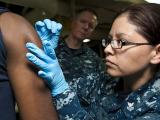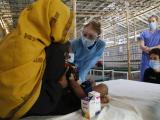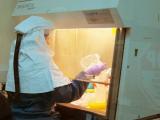Oct 27, 2011 (CIDRAP News) The US Department of Health and Human Services (HHS) has continued to modify its bioterror countermeasure priorities based on current risk assessments, but it hasn't updated formal plans or fleshed out budget priorities, the Government Accountability Office (GAO) said in a report yesterday.
Though HHS is making headway on 13 goals outlined in its August 2010 countermeasure review, it hasn't developed an adequate strategy for monitoring progress on the complex tasks that often involve several different agencies and offices, the report said.
The GAO's review, detailed in a 54-page report, was requested by the US Senate's Committee on Homeland Security and Governmental Affairs. The committee had questions about how extensively HHS uses risk assessment to guide its countermeasure development and acquisition priorities.
The questions come as Congress considers reauthorization of the Project Bioshield Act of 2004, which was set up to develop countermeasures against biological weapons and other threats and is set to expire in 2012.
HHS spelled out its countermeasure development and acquisition priorities in a 2007 plan, along with spending plans through 2013, according to the report. The agency had intended to update the plan biannually to reflect changes in priorities, but so far it hasn't issued any formal updates, the GAO found. Lack of current information can be a problem for companies that need to make decisions on investments in countermeasure development.
In December 2009 HHS Secretary Kathleen Sebelius ordered a review of biodefense measures, based in part on the delayed delivery of the 2009 H1N1 pandemic vaccine. In August 2010 HHS released the report, which detailed plans to overhaul the nation's civilian biodefense program, including increased partnerships with industry and new steps to boost development of countermeasures that have little or no commercial market.
During the GAO's investigation, HHS said its monitoring strategy for the 2010 plan includes quarterly planning document updates and quarterly and yearly progress reviews. However, GAO investigators said the planning document doesn't contain complete information and doesn't allow tracking progress across all initiatives.
The GAO said the monitoring strategy isn't consistent with federal control standards or program management best practices. It acknowledged the difficult task HHS has, but said a better monitoring strategy would help it gauge overall progress and determine if it was meeting all of its countermeasure objectives.
Industry officials and other experts told the GAO that some problems still exist among HHS agencies and offices, which can hamper industry's efforts to supply countermeasures. HHS said it is finalizing written agreements for its agencies and offices, which should improve coordination.
The GAO recommended that HHS update its acquisition and development plan, provide budget priorities for the acquisitions, and develop a strategy to monitor its initiatives.
In response to the report, HHS agreed with the GAO's first two recommendations but said it had already developed a monitoring strategy. The GAO said HHS provided it with an outline of a strategy, but as of August it has not seen the full document.
The GAO suggested that HHS still needs a strong monitoring system that contains complete information on all of the initiatives, including time frames and milestones.
See also:
Oct 26 GAO report on bioterror countermeasure acquisition
Aug 19, 2010, CIDRAP News story "HHS sees greater federal role in building biodefense tools"


















